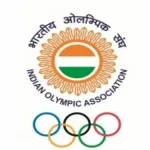Delhi, being the capital city, has always been under national and political scrutiny, particularly due to the governance model promised by Arvind Kejriwal’s Aam Aadmi Party (AAP). However, after a decade in power, AAP faced mounting challenges, leading to a political shift where the Bharatiya Janata Party (BJP) reclaimed control after nearly three decades.
The downfall of the Kejriwal-led government can be attributed to several key factors, including governance fatigue, corruption allegations, economic mismanagement, and failure to deliver on crucial promises. Furthermore, the opposition’s national-level coalition, the INDIA bloc, failed to shield AAP from its declining public trust. Despite positioning itself as an alternative to the BJP, AAP’s inability to fulfill its commitments became a key reason for its electoral setback.
Incumbency and governance fatigue
When Arvind Kejriwal entered politics, he positioned himself as an activist challenging the system, with little prior experience in governance. His promises of clean and efficient administration resonated with voters, helping him defeat traditional political parties in Delhi. However, after ten years in power, AAP struggled to maintain its image as a party of change. The longer a party stays in power, the more it faces scrutiny, and Kejriwal’s government was no exception. Governance fatigue set in as many of AAP’s flagship initiatives stagnated or fell short of expectations.
Kejriwal’s leadership, which thrived on confrontation with the central government, started appearing counterproductive. Voters increasingly saw his constant conflicts with the LG and BJP-led Centre as obstacles to effective administration. While AAP initially positioned itself as a pro-people government, it failed to transition from activism to sustainable governance, which contributed to its declining appeal.
Corruption allegations: AAP’s anti-corruption image tarnished
AAP was built on the promise of transparency and zero corruption, but multiple corruption allegations damaged its clean image. The Delhi liquor policy scandal became a turning point. The arrests of Kejriwal and senior AAP leaders over corruption charges in the liquor licensing scam severely impacted the party’s credibility. While AAP dismissed the allegations as politically motivated, the legal troubles, combined with a lack of strong defense, eroded voter trust. For a party that rose to power on an anti-corruption plank, these developments reinforced public perception of hypocrisy, leading to a credibility crisis.
Financial mismanagement: The economic burden of AAP’s freebies
AAP’s governance model relied heavily on subsidies for electricity, water, and education, but concerns over fiscal sustainability grew over time. Reports indicated a decline in Delhi’s revenue collection from 5.4% to 3.9% of GDP under AAP, making the economy increasingly dependent on central grants. The Rs 10,000 crore loan proposal from the National Small Savings Fund raised alarms over excessive borrowing and mismanagement. Critics argued that AAP’s freebie model was economically unsustainable, leading to skepticism about Delhi’s financial future. While welfare measures were appreciated initially, voters began questioning whether AAP’s policies were sustainable in the long run.
Decline in education standards: AAP’s flagship’s reform under scrutiny
One of AAP’s biggest claims to success was its education reforms, but closer analysis revealed severe shortcomings. Between 2013-14 and 2017-18, government school enrollment dropped by 8%, contradicting AAP’s claims of progress. Class 10 pass percentages plummeted from 98.81% to 68.90%, raising doubts about the so-called “education revolution.” Infrastructure improvements were showcased, but learning outcomes remained stagnant, failing to justify the massive spending on education. The gap between perception and reality in education reforms hurt AAP’s credibility, especially among middle-class voters.
Infrastructure and public services: Development promises unmet
Despite being in power for a decade, AAP failed to resolve long-standing infrastructure issues, leading to widespread public dissatisfaction.
Key Failures
- Yamuna Cleaning: Kejriwal promised to clean the Yamuna by 2025, but pollution levels remained alarmingly high, with little visible improvement.
- Air Pollution Control: Despite launching the Odd-Even scheme and distributing anti-smog guns, Delhi’s air pollution remained among the worst in the world.
- Traffic Congestion: The city’s traffic jams worsened, and AAP’s failure to integrate better public transport solutions only aggravated the problem.
- Women’s Safety: Despite campaigning on women’s safety, crime against women continued to rise, with no substantial improvement in policing or surveillance.
While AAP promised a model city, Delhi’s infrastructure and pollution crisis told a different story, frustrating both residents and businesses.
Erosion of support among key voter groups
AAP initially built its strong voter base among lower-income groups, Dalits, and auto-rickshaw drivers. However, recent elections saw a significant decline in their support. Dalit voter backing fell from 53% in 2020 to 44%, indicating dissatisfaction. Auto-rickshaw drivers, who were once strong AAP supporters, shifted loyalty due to unmet promises regarding fare regulation and permits. The middle-class, once enthusiastic about AAP’s governance, turned away due to deteriorating infrastructure and rising taxes. The erosion of these key voter blocs made it easier for BJP to consolidate its gains.
BJP’S strategic campaigning and Modi factor
The BJP played an aggressive and strategic campaign, targeting AAP’s weaknesses effectively. The Modi factor played a crucial role, with the Prime Minister’s popularity influencing urban voters. BJP highlighted AAP’s corruption scandals and governance failures, shifting the narrative away from its own shortcomings. The promise of better coordination between Delhi’s administration and the Centre under BJP resonated with voters who were tired of constant conflict. While BJP did not have a strong Chief Ministerial face, its centralized campaign strategy, backed by Modi’s appeal, proved decisive.
Conclusion
The downfall of AAP and the resurgence of BJP in Delhi signify a major shift in public sentiment. Several factors played a role in this transformation:
- Incumbency fatigue and governance challenges weakened AAP’s standing.
- Corruption scandals tarnished AAP’s anti-establishment appeal.
- Failures in infrastructure, pollution control, and public services led to rising public frustration.
- BJP’s aggressive campaign and Modi’s influence helped turn the tide in its favor.
As the BJP takes control, the focus will be on whether it can deliver on its promises and provide an alternative governance model that meets Delhi’s growing demands. Meanwhile, AAP faces the challenge of reinventing itself to stay politically relevant. The political landscape of Delhi has undergone a significant transformation, and how both parties adapt to this change will determine the future course of politics in the capital.
(The author can be reached at [email protected])








